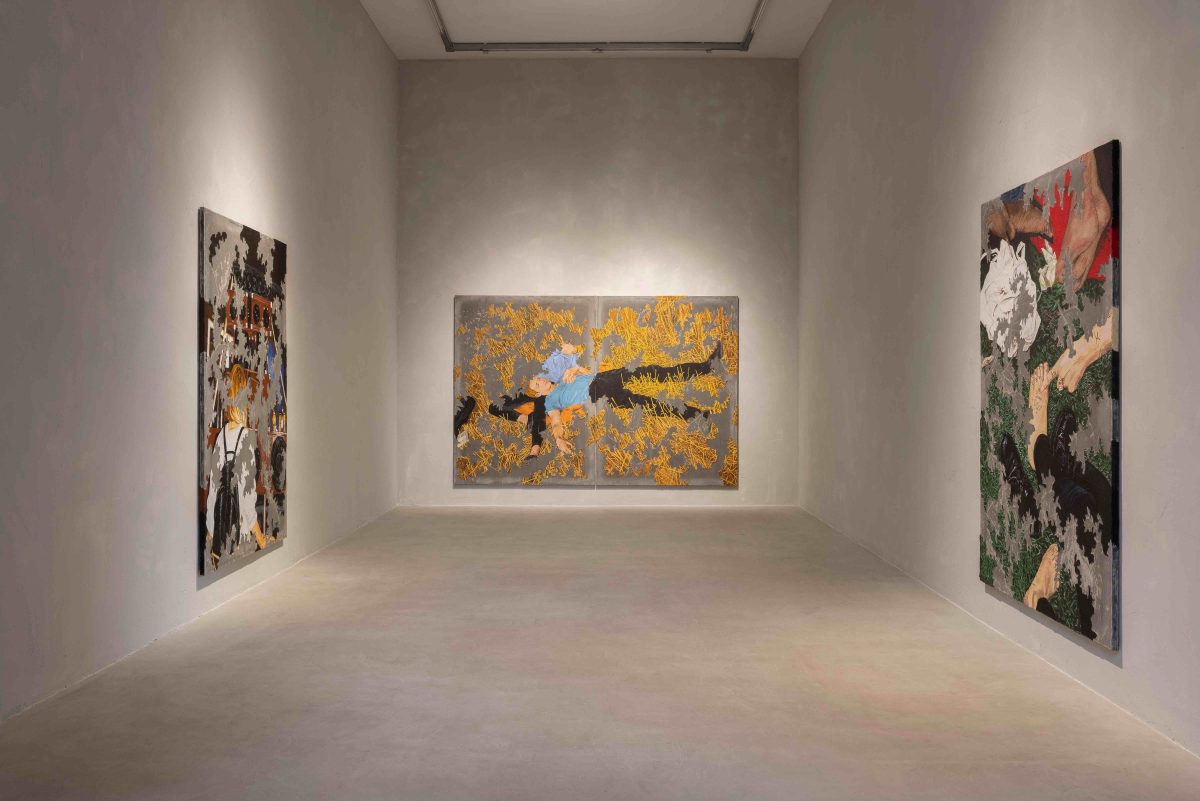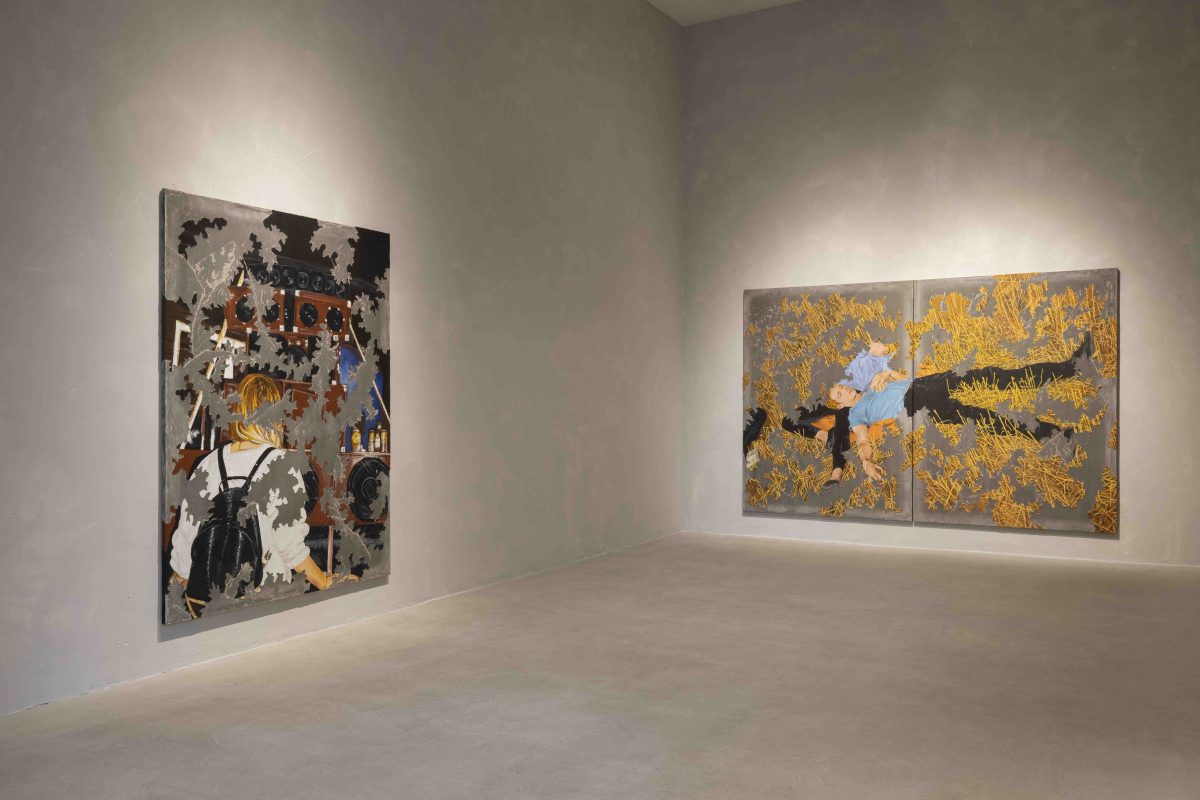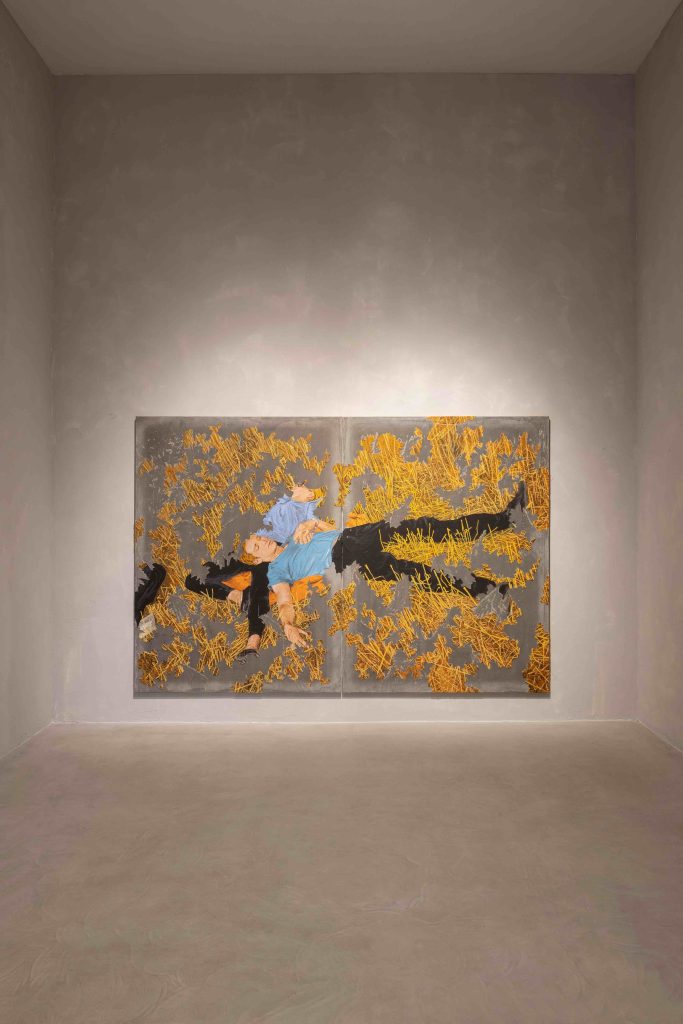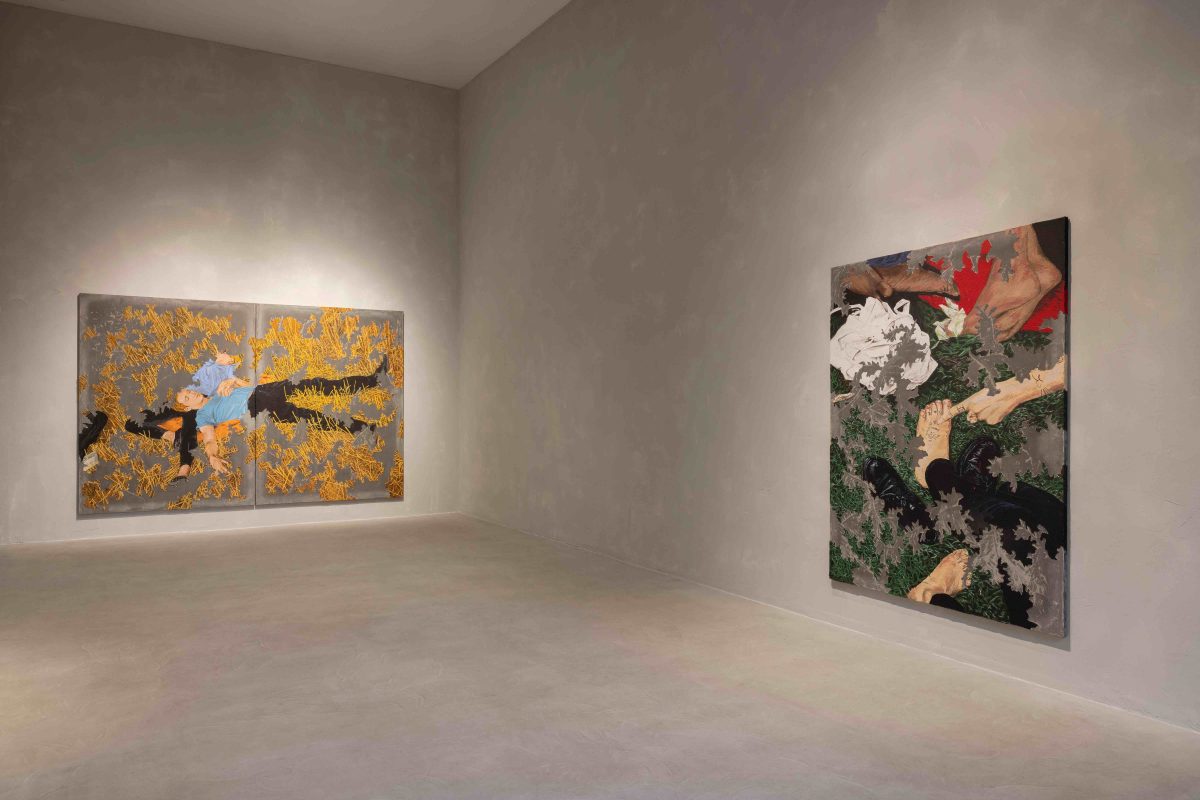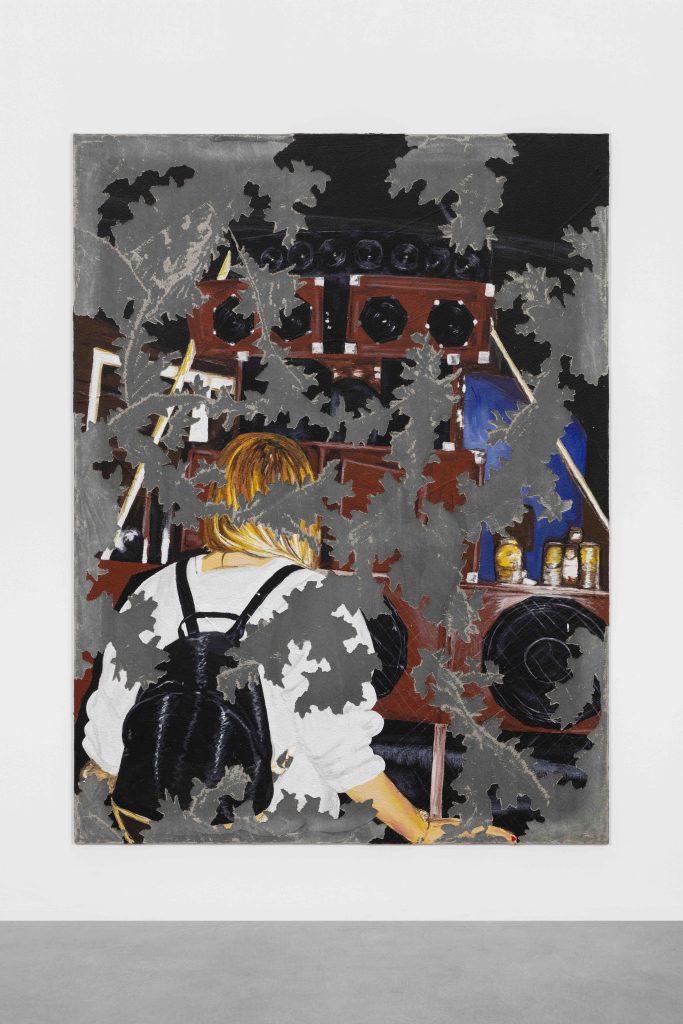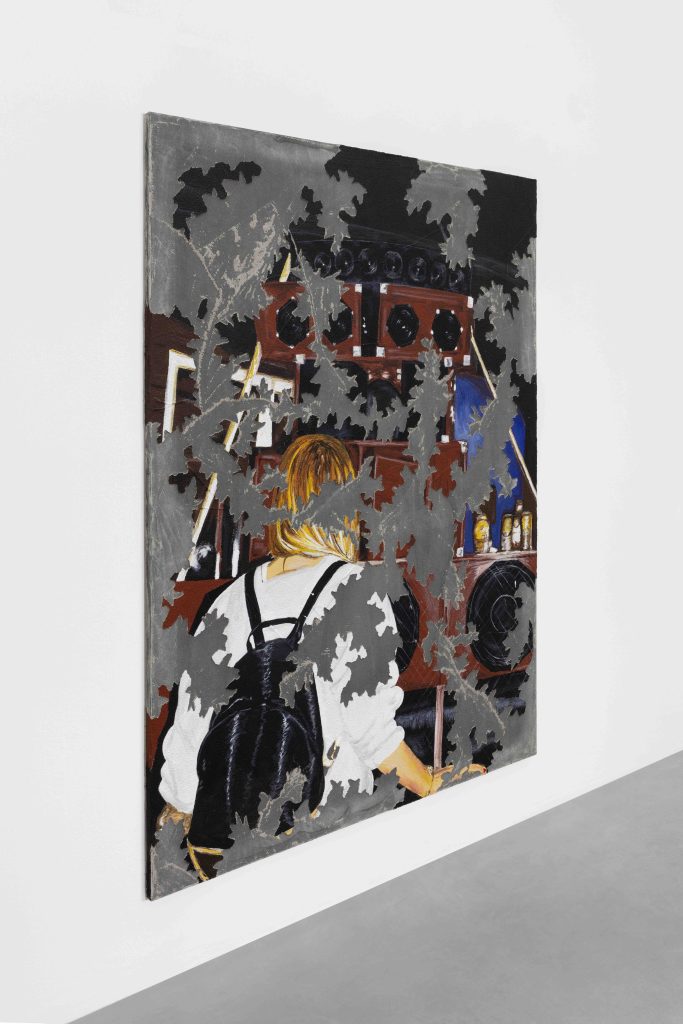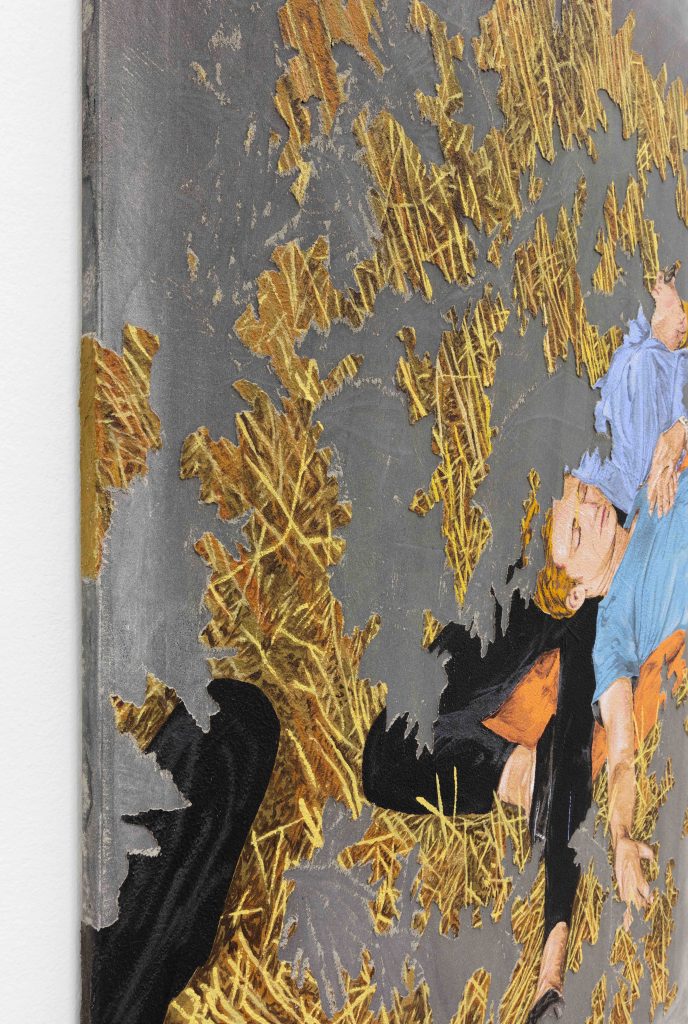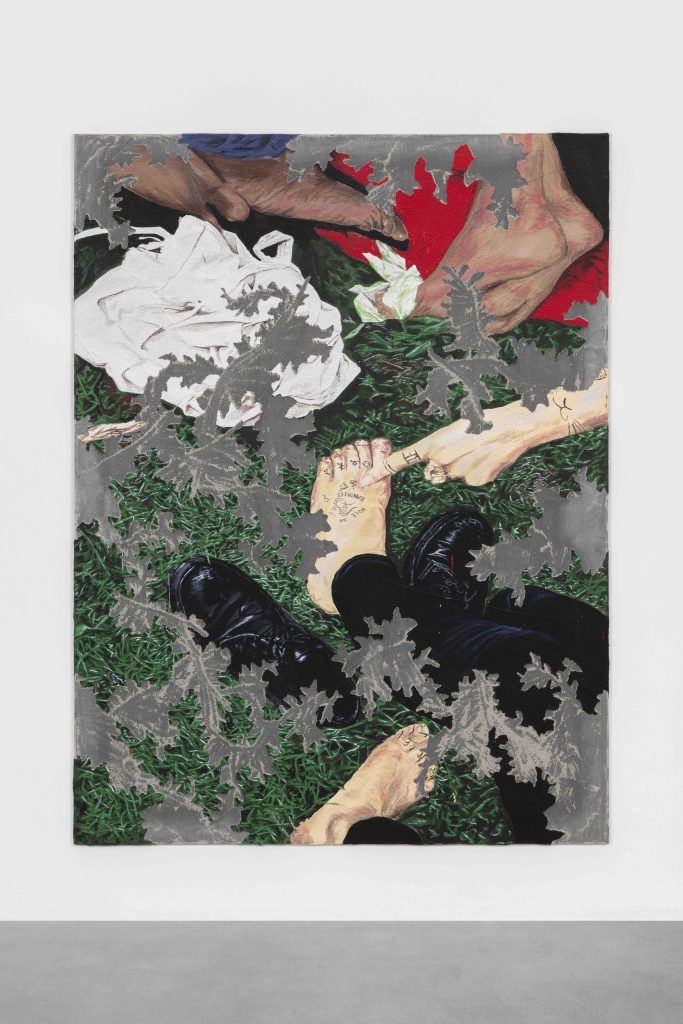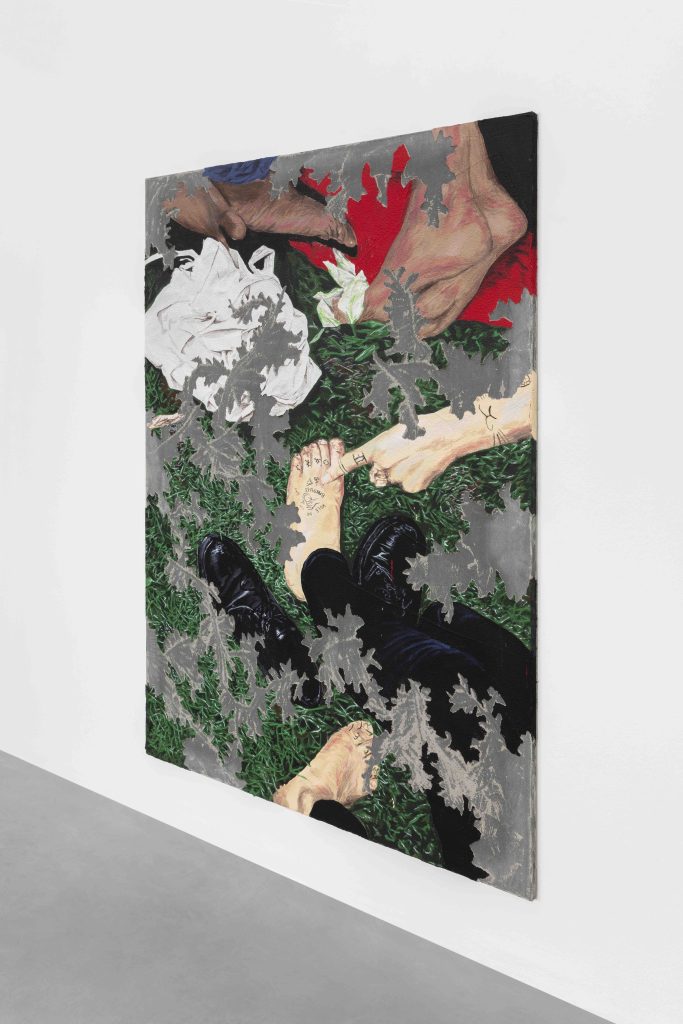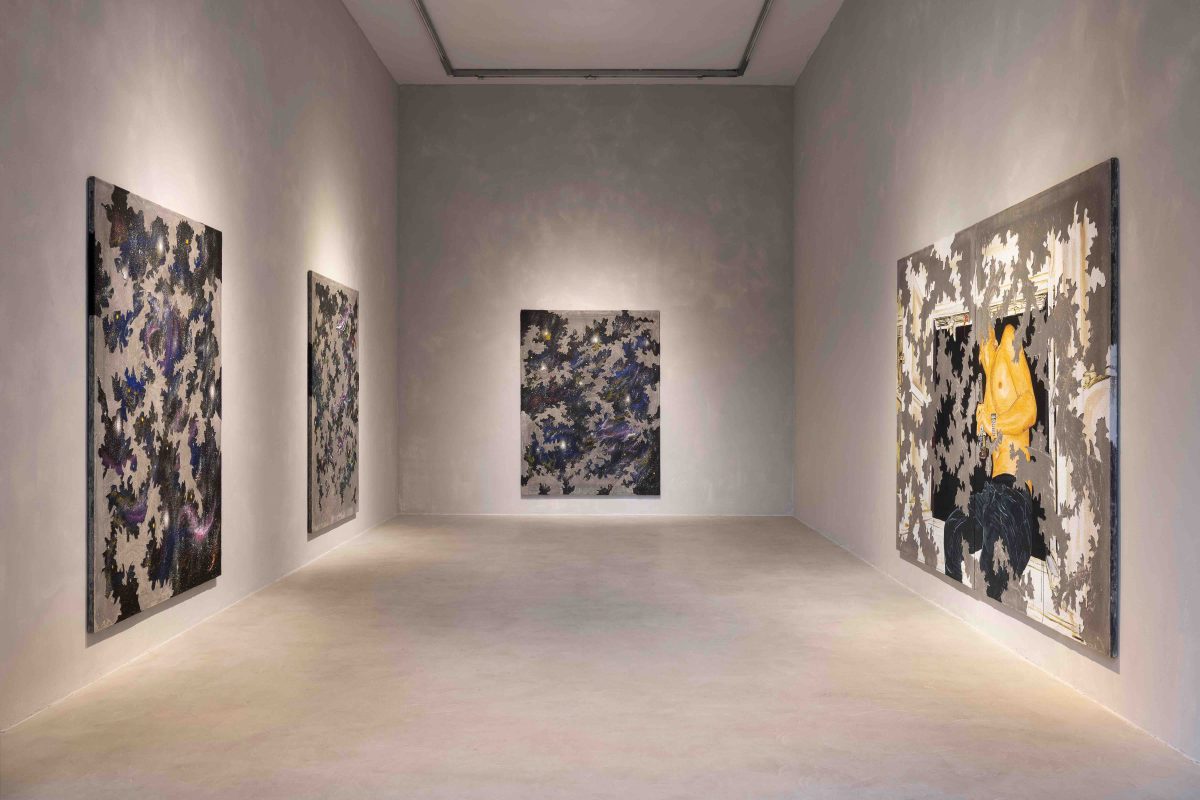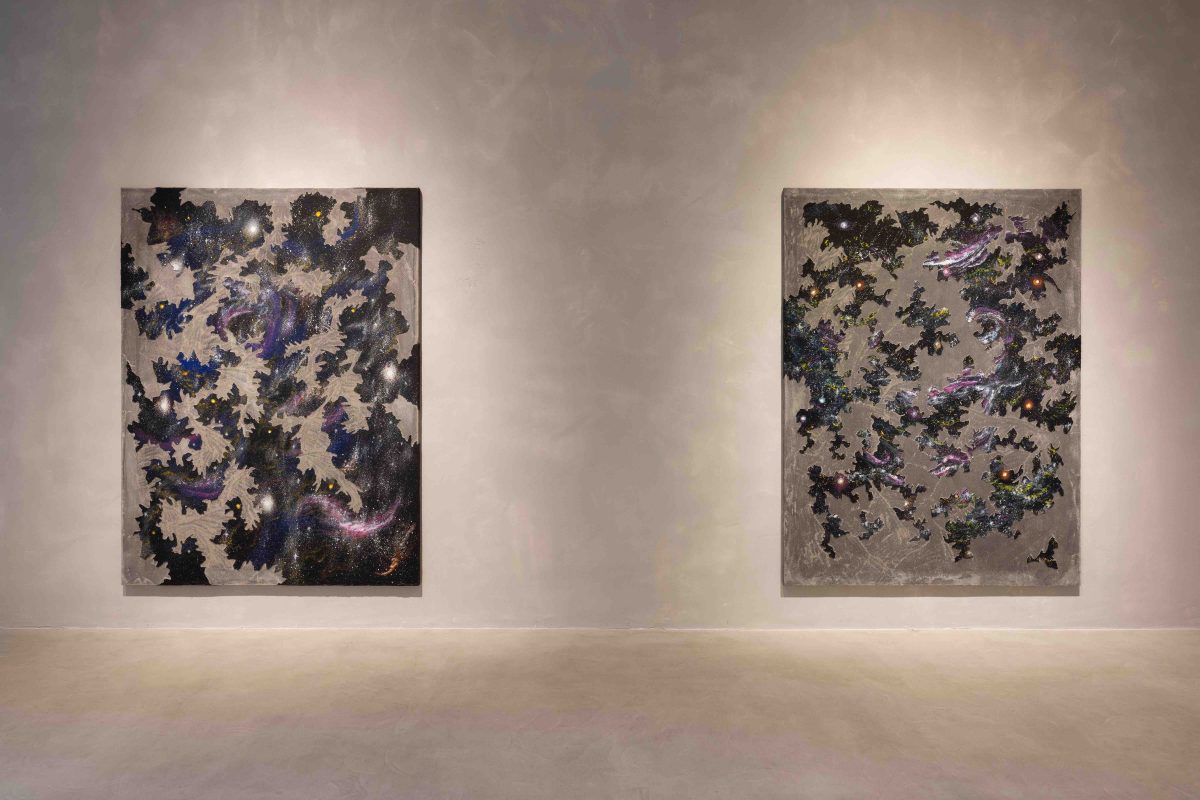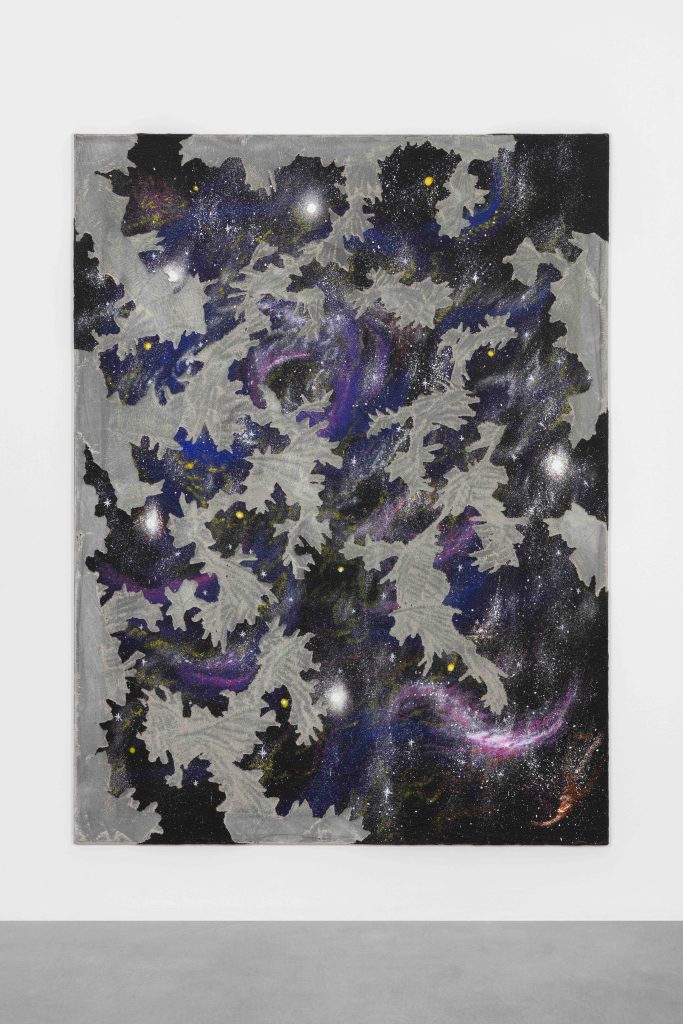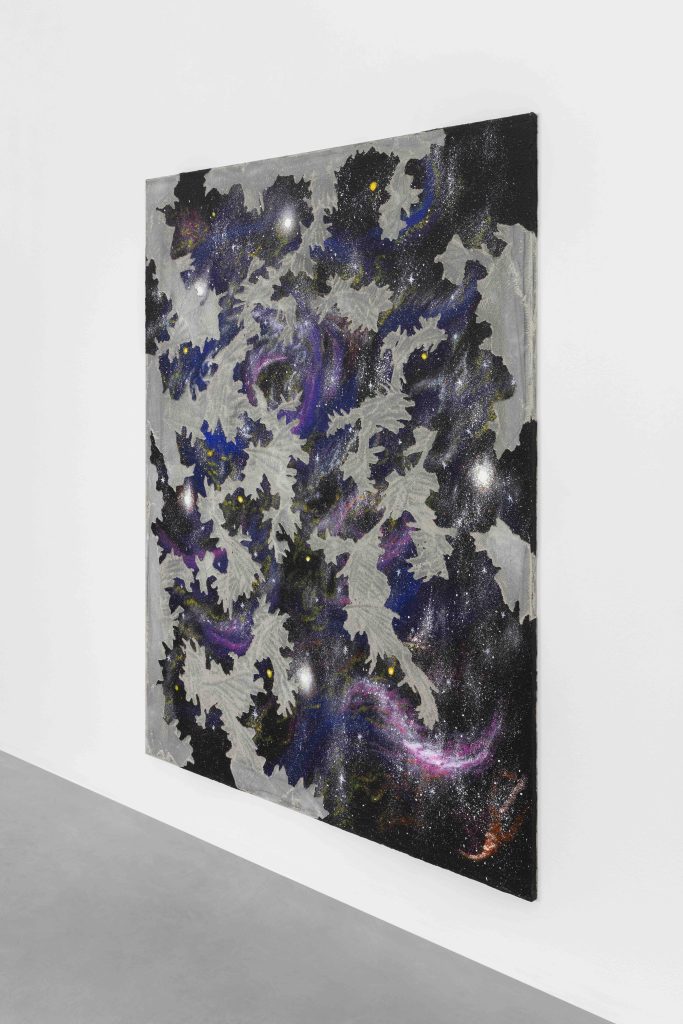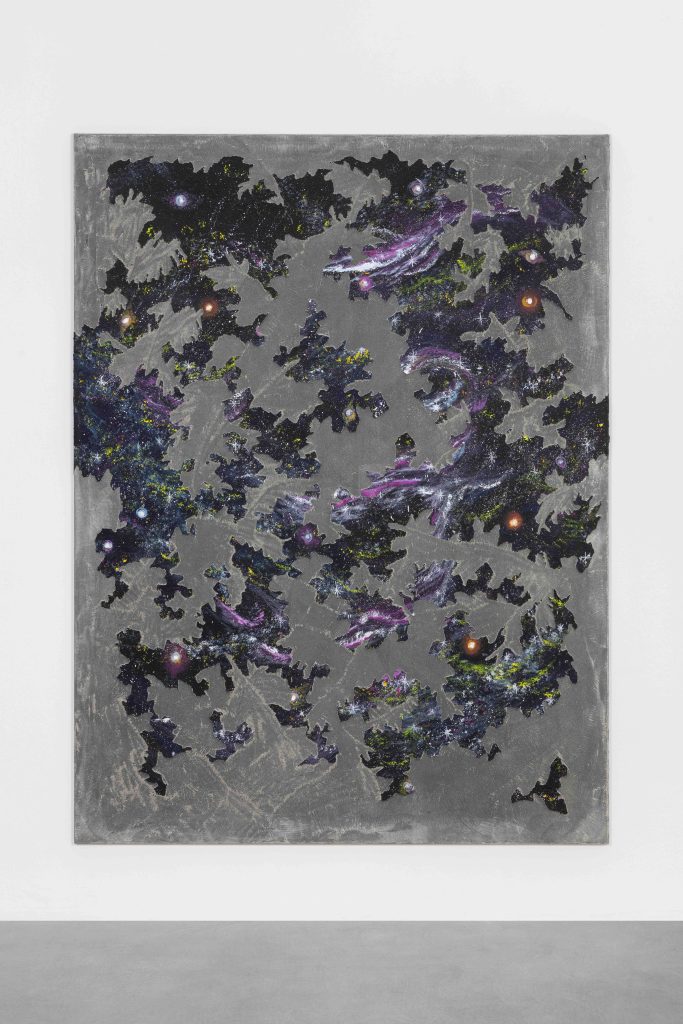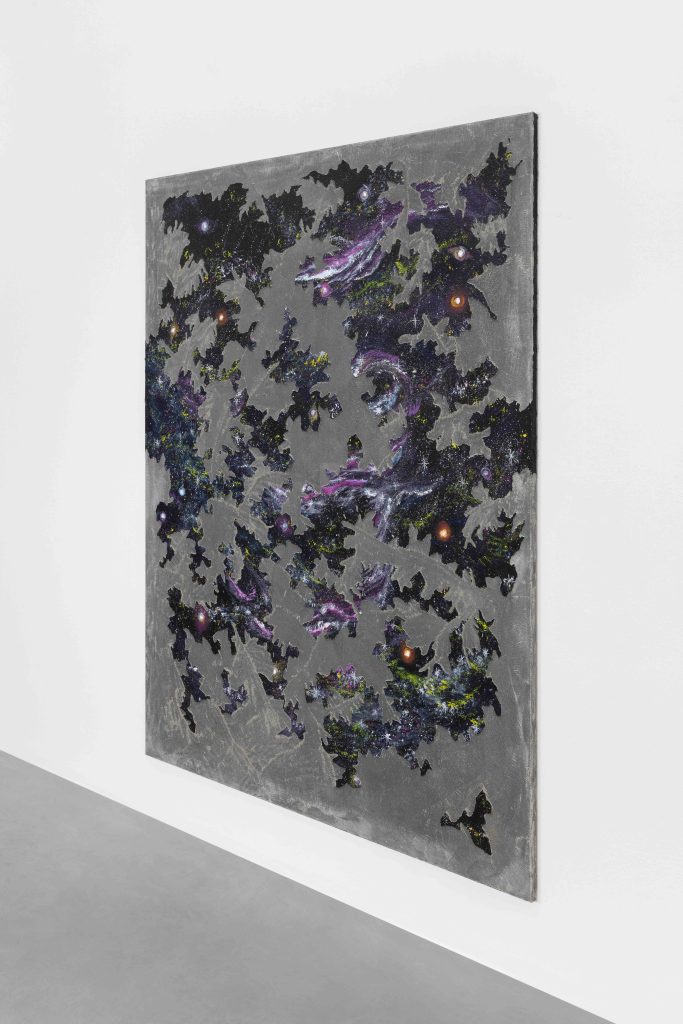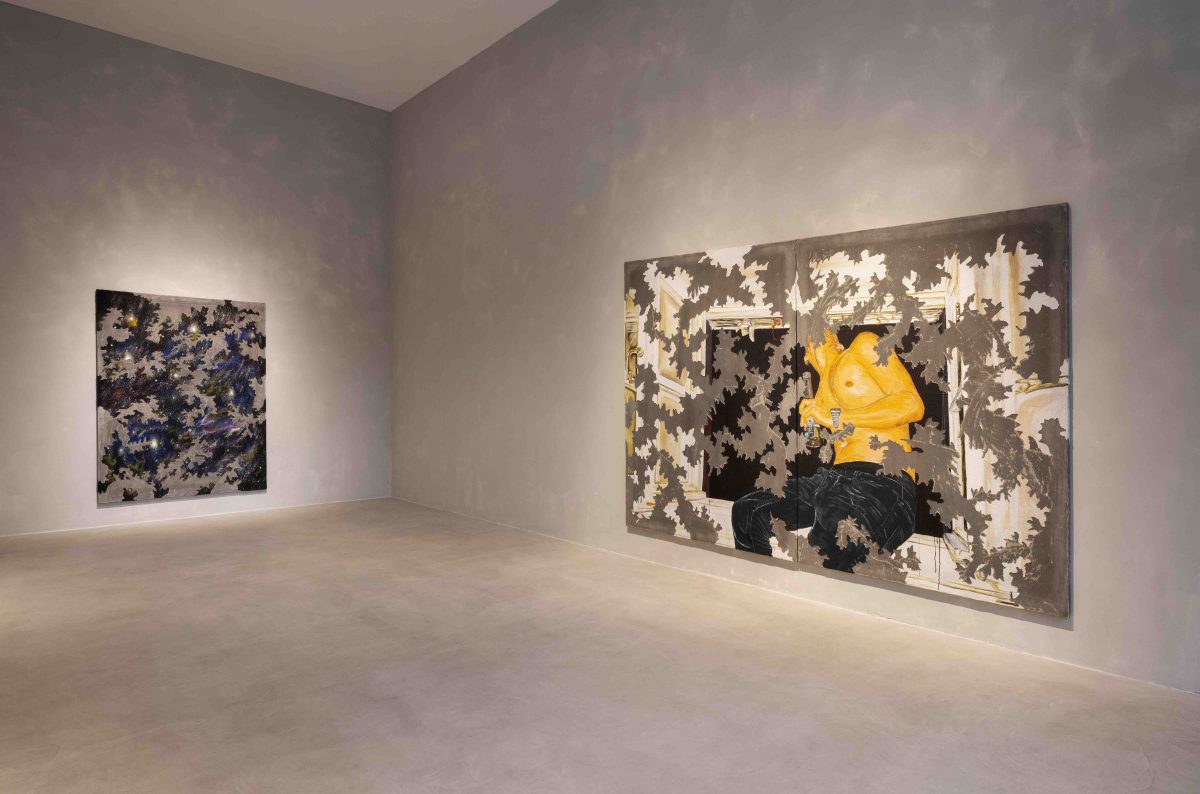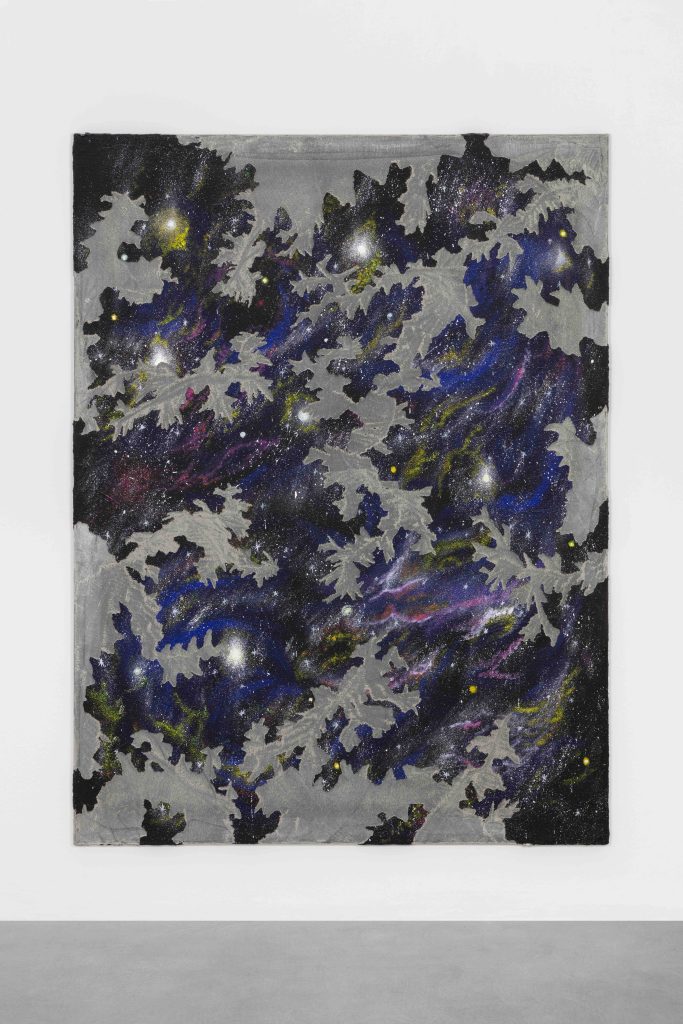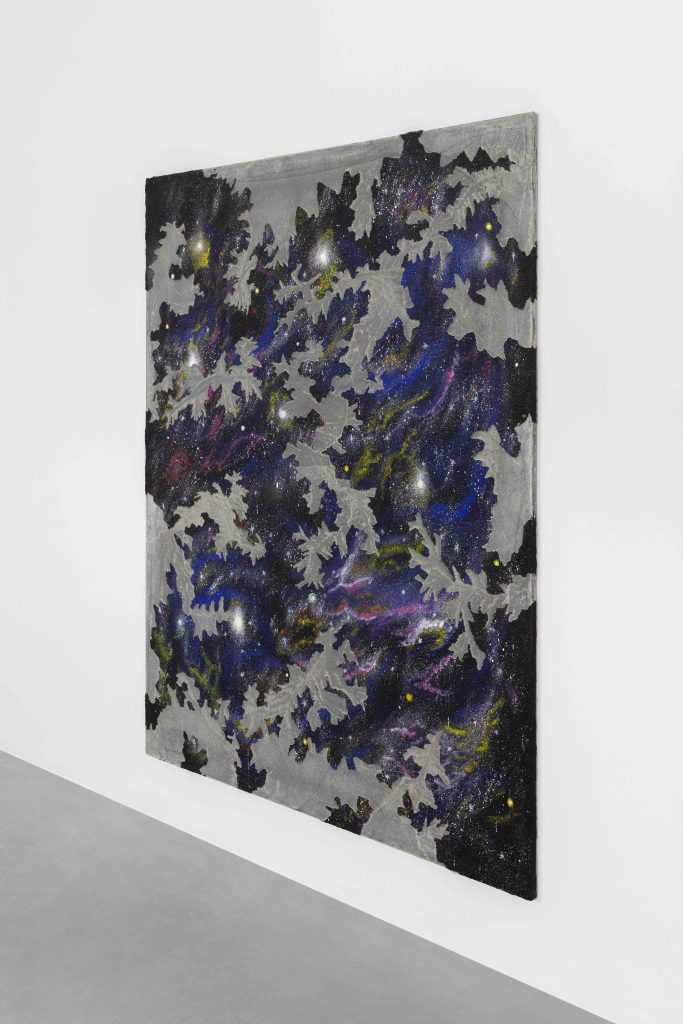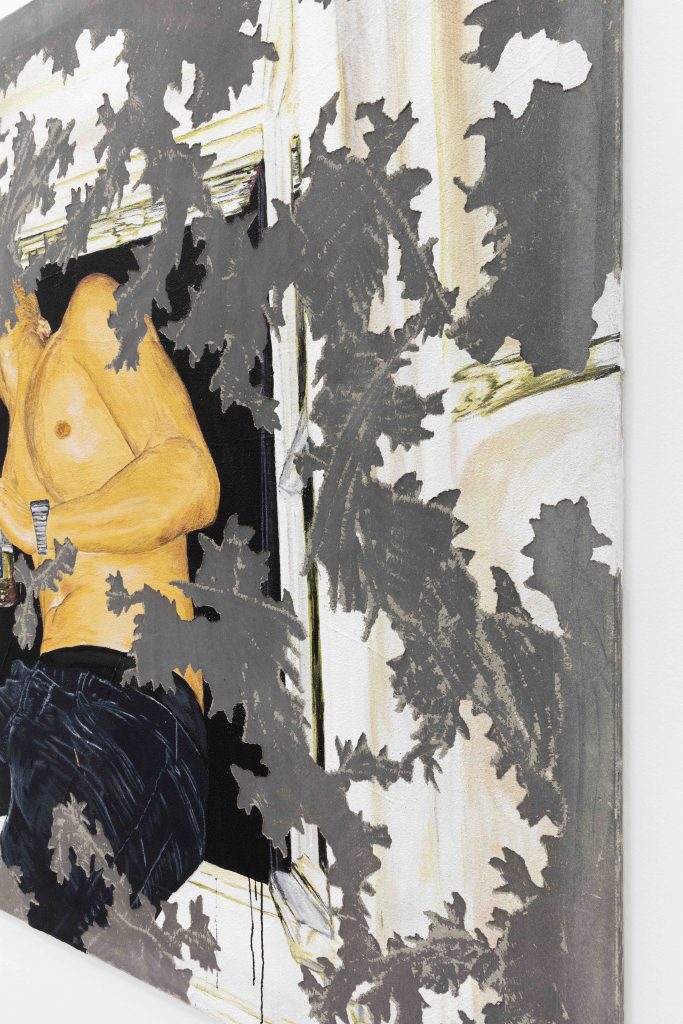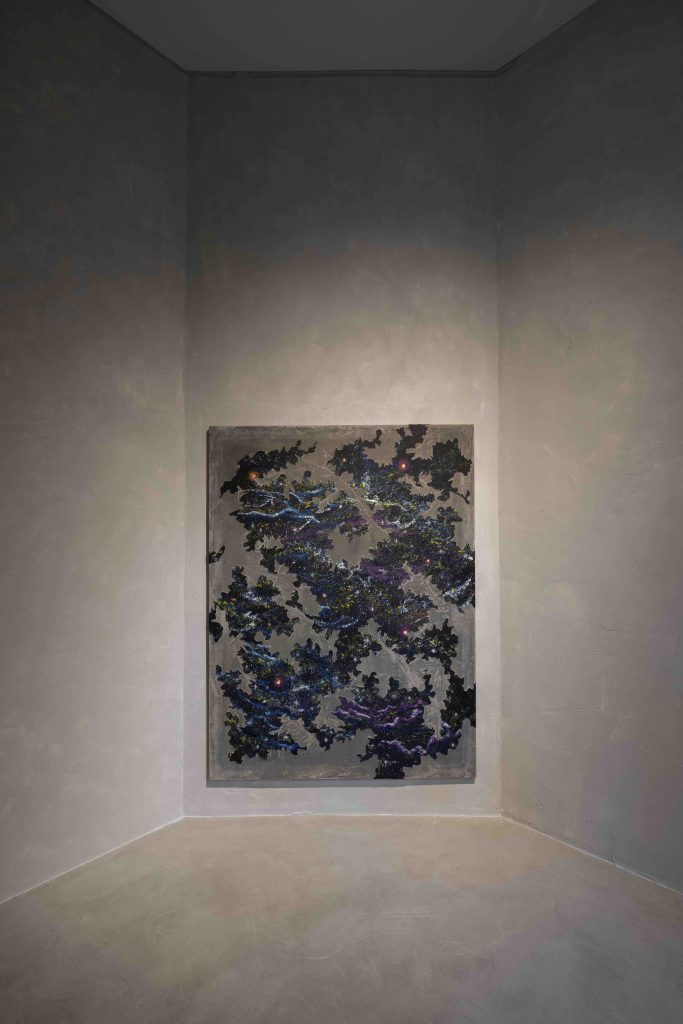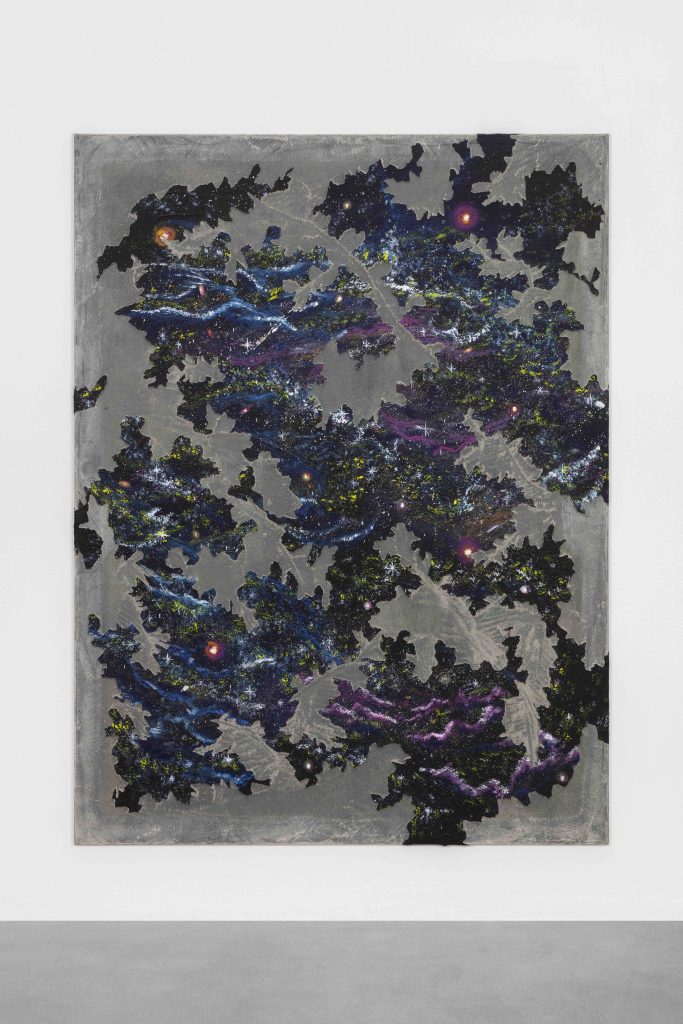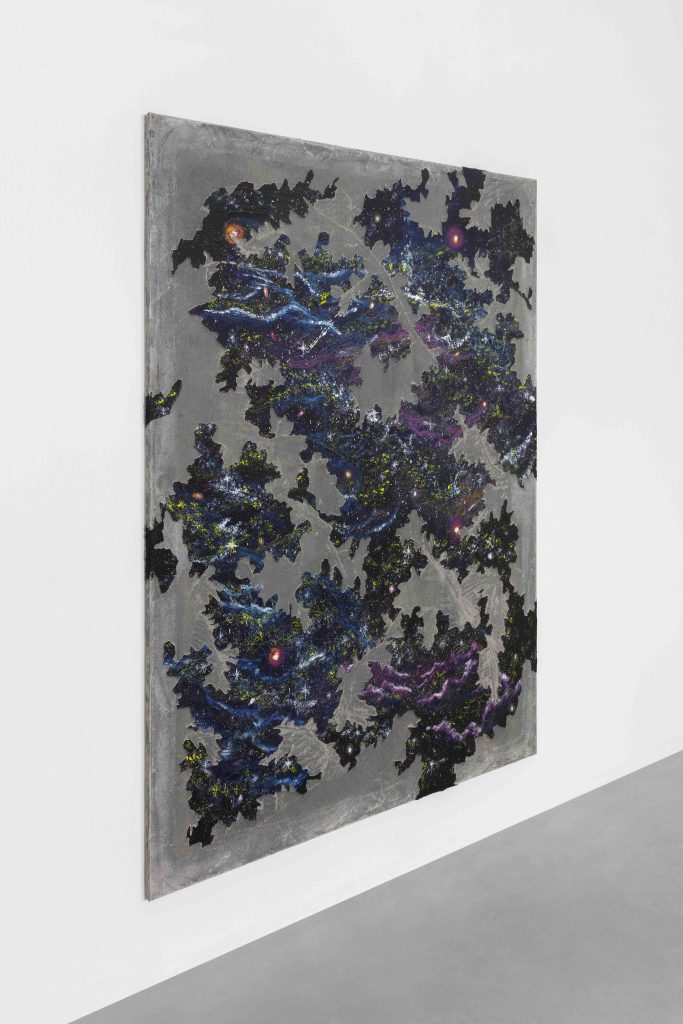
- This event has passed.
kaufmann repetto is glad to announce Ricordi di Campo (Field Memories), Latifa Echakhch’s sixth solo exhibition with the gallery. Exploring the paradox between the projection of an idea and its representation, the new paintings are realized with a décollage technique, where fragments of pictorial images levitate on a rough concrete surface. Resonating with the harsh materiality of the substrate, the surrounding gallery walls are painted in a similar shade of cement grey, transforming the white cube into an urban grotto, and activating a poetic interplay between the narrative and abstract layers of Echakch’s works.
The large-scale paintings of the Night Time series are intimately correlated to the artist’s interdisciplinary research for the Swiss Pavilion at the 59th Venice Biennale, which analyzes the interstices between various sensorial experiences connected to the perception of music. The figurative scenes presented in Milan are based on photography by Echakhch’s friend Sim Ouch, who has been documenting nightlife events in the Lake Geneva region over the past two decades. The photo-diaristic snapshots that underpin the paintings capture people in a variety of casual situations that might occur during a concert or a party, like a woman standing in front of a sound system piled up in a car hood, or the close-up view of naked feet on a grassy terrain. A literal allusion to the exhibition title is evoked in a diptych that shows a woman and a man lying in a field, holding hands while being either sound asleep, or maybe daydreaming. Only key fragments of the painted images remain intact, as larger portions have been chipped away, unveiling the course layer of concrete underneath.
Another work – depicting a young, bare-chested man sitting on a window sill and turning his head up to observe something visible in the dark night outside – introduces the second series of works, that depict the sky, a recurring theme throughout Echakhch’s practice. Here, the clouds and sunsets of previous works give way to the universe itself, inspired by the images transmitted by the Webb Space Telescope. Launched by the NASA in 2021, its infrared-sensing instruments can capture light that was emitted more than 13 billion years ago by the most ancient stars and galaxies. The imagery transmitted by the telescope shows us details of the universe hitherto unknown, revealing for instance the massive materiality of early galaxies, their complex spectroscopy data translated in a daring color palette. These scientific, yet spectacularly beautiful images have been painted and then partially scratched away by the artist, leaving only fragments, standing out like an abstract pattern on a coarse grey surface.
The works presented in this exhibition embody in an almost tangible way Echakhch’s meditation on the bias between the initial projection of an idea and its representation, as well as on the element of temporality in the contemplation of an artwork. By first creating, and then destroying images based on photographic sources, she subtly tackles the anti-illusionist investigation of the Nouveau Realisme movement, where the décollage technique resulted in the ‘torn poster’ aesthetiques employed by Wolf Vostell, Mimmo Rotella and their peers. Echakhch seems to invite the viewer to change perspective and to acknowledge the complexity and ambiguity of reality, yet at the same time the artist’s enactment of two antagonistic gestures – creation and destruction – reechoes with the processual proceedings which are so central in her practice: “I am particularly interested in the exact moment coming after an action or an event, when we have before our eyes some traces which we—as viewers—have to rebuild as a narrative chronology, in order to be able to understand the context, as a kind of detective practice”, says Echakhch, “It’s one of the main tools I use to involve the public, first of all to establish a contemplative ground and then to push it in an active direction. I have to leave viewers with a visual understanding.”
kaufmann repetto è lieta di presentare Ricordi di Campo, la sesta personale di Latifa Echakhch con la galleria. Esplorando il paradosso tra la proiezione di un’idea e la sua rappresentazione, i nuovi dipinti sono realizzati con la tecnica del décollage, in cui frammenti di immagini pittoriche fluttuano su una superficie grezza di cemento. In risonanza con l’aspra matericità del substrato, le circostanti pareti della galleria sono dipinte con una tonalità simile di grigio cemento, trasformando il white cube in una grotta urbana e attivando un’interazione poetica tra la narrativa e le stratificazioni astratte delle opere di Echakhch.
I grandi dipinti della serie Night Time sono legati intimamente alla ricerca interdisciplinare condotta dall’artista per il Padiglione Svizzero in occasione della 59a Biennale di Venezia che analizza gli interstizi tra le varie esperienze sensoriali collegate alla percezione della musica. Le scene figurative presentate a Milano si basano su fotografie dell’amico Sim Ouch che negli ultimi due decenni ha documentato la vita notturna della regione del Lago di Ginevra: scatti in stile foto diaristico che colgono persone nelle svariate situazioni informali che potrebbero verificarsi a un concerto o a una festa, come una donna in piedi davanti a un impianto di amplificazione impilato sul cofano di un’automobile o il primo piano di un piede nudo su un terreno erboso. Un’allusione letterale al titolo della mostra è evocata in un dittico in cui una donna e un uomo sono sdraiati mano nella mano in un campo e dormono profondamente, o forse sognano ad occhi aperti. Solo frammenti principali delle immagini dipinte restano intatti, dato che gran parte della superficie è stata asportata svelando la sottostante base di cemento.
Un’altra opera – in cui un giovane a torso nudo è seduto sul davanzale di una finestra, la testa alzata per osservare qualcosa visibile nella notte oscura – introduce la seconda serie di lavori che ritrae il cielo, un tema ricorrente nella pratica di Echakhch. Le nuvole e i tramonti delle opere precedenti lasciano qui spazio all’universo stesso, ispirato alle immagini trasmesse dal Webb Space Telescope. Lanciato dalla NASA nel 2021, la sua strumentazione di rilevamento a infrarossi può catturare luce emessa più di 13 miliardi di anni fa dalle stelle e dalle galassie più antiche.
Le immagini trasmesse dal telescopio ci mostrano dettagli dell’universo fino ad ora sconosciute, svelando ad esempio l’imponente matericità delle prime galassie, con i loro complessi dati spettroscopici resi in un’audace paletta cromatica. Tali immagini, scientifiche eppure di una bellezza spettacolare, sono state dipinte e poi parzialmente scrostate dall’artista, lasciando solo frammenti che spiccano come un motivo astratto su una grezza superficie grigia. Le opere presentate in questa mostra incarnano quasi tangibilmente la meditazione di Echakhch sulla distorsione tra la proiezione iniziale di un’idea e la sua rappresentazione, come anche sull’elemento della temporaneità nella nostra contemplazione di un’opera d’arte. Creando prima e poi distruggendo immagini basate su fonti fotografiche, Echakhch affronta sottilmente l’indagine antiillusionista del Nouveau Realisme, in cui la tecnica del décollage si traduceva nell’estetica del ‘manifesto strappato’ adottata da Wolf Vostell, Mimmo Rotella e dai loro compagni artisti. Echakhch sembra invitare l’osservatore a cambiare prospettiva e a riconoscere la complessità e l’ambiguità della realtà; allo stesso tempo però, l’adozione da parte dell’artista di due gesti antagonisti – creazione e distruzione – riecheggia i procedimenti così centrali nella sua pratica: “Sono particolarmente interessata al momento preciso che segue un’azione e un evento, quando abbiamo davanti agli occhi alcune tracce che dobbiamo – come spettatori – ricostruire in una cronologia narrativa al fine di riuscire a comprendere il contesto, come una specie di pratica investigativa”, dice Echakhch, “È uno degli strumenti principali che impiego per coinvolgere il pubblico, innanzitutto per stabilire un terreno contemplativo e quindi per spingere verso una direzione attiva. Devo lasciare gli spettatori con una comprensione visiva”.

